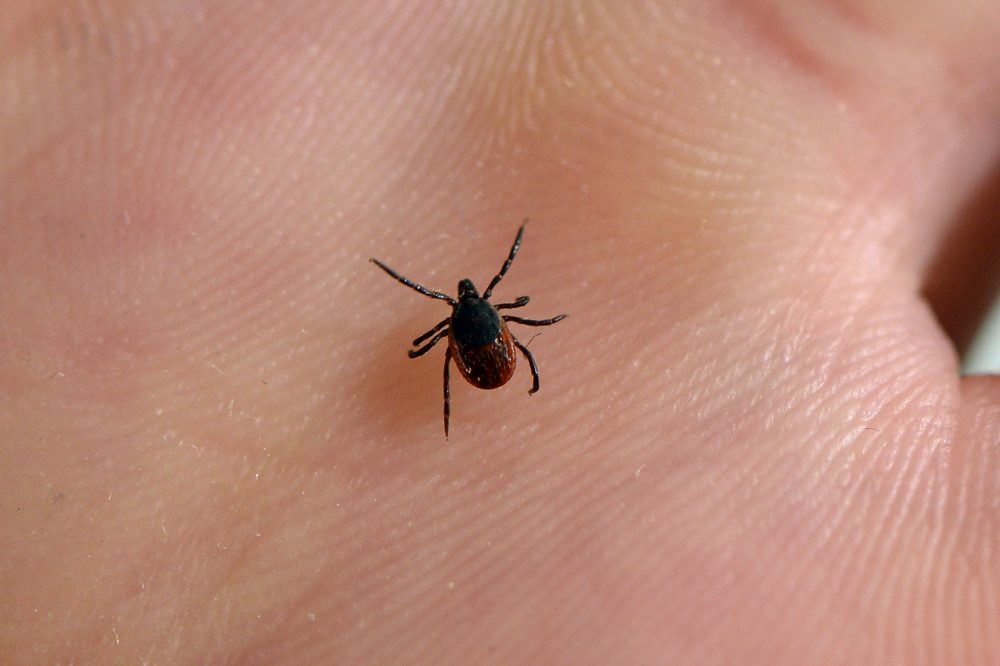Advertisement
Human Testing Begins On Springtime Lyme Disease Shot Developed In Mass.

In 2023. If all goes well, that's when a springtime shot to prevent Lyme disease could become available.
"So, two more years of white socks?" I found myself asking Dr. Mark Klempner from MassBiologics, the nonprofit unit of UMass Medical School that developed the injection. "Two more years of fear in the forest?"
He counseled patience for all of us who are sick of worrying that a tick carrying the Lyme disease bacterium will infect us. (And who wear white socks so we can spot the dark bugs as they sneak up our legs.)
"We're getting there," he said. "We used the state's money wisely."
The state invested $1 million toward the shot, which is not a vaccine but rather "pre-exposure prophylaxis" or PrEP: It delivers anti-Lyme antibodies directly to the patient rather than triggering the patient's own immune system to make the antibodies as vaccines do.
The shot got federal approval at the end of last year to begin human testing, and that phase one clinical trial with about 66 subjects began last week, Klempner says.
But not in Massachusetts. The shot is being safety tested in Lincoln, Nebraska, because there’s so little Lyme disease there — so it will be clear that any antibodies against the Lyme bacteria detected in the subjects' blood came from the shot, not from a previous infection.
Klempner says this initial testing will likely last the rest of the year, because it's important to be sure that the antibodies could last through an entire tick season.
Testing for how effective the shot is could begin in 2022, he says, which means that wide public availability in 2023 "would not be out of the question."
If the shot does reach the market in 2023, that will be just about a decade after Klempner and his colleagues pinpointed its antibodies as key to immunity against Lyme disease.
A Lyme vaccine that used to be publicly available had been withdrawn, he recalls, "and since we understood the mechanism of protection there, we were able to go right after the molecule that we thought would be protective."
Lyme disease has been on the rise, particularly in the Northeast and Midwest, for decades, and the CDC estimates it may infect nearly a half million Americans each year.
